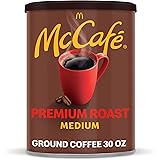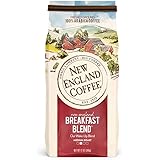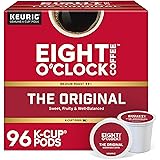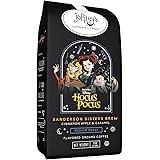Crafting Frothy Espresso Coffee at Home: No Machine Needed
The desire for a rich, cafe-style coffee often arises. However, not everyone possesses an expensive espresso machine. The good news is that a luxurious, frothy coffee experience is achievable in any kitchen. This detailed guide, complementing the helpful video above, demystifies the process. It allows for the creation of delicious, homemade frothy espresso coffee without specialized equipment.
The Science of Homemade Frothy Coffee
Achieving a frothy texture for your coffee might seem complex. Yet, it involves a simple principle: aeration. When instant coffee, sugar, and warm water are vigorously beaten, air is incorporated. This forms a stable emulsion. The sugar plays a crucial role. It helps to stabilize the air bubbles. This creates the creamy, voluminous texture desired. It is much like whipping egg whites into meringue. The goal is to trap air effectively.
Understanding Key Ingredients
Each component in this recipe contributes to the final result. Understanding their function is important.
-
Instant Coffee: This is the foundation. Instant coffee dissolves quickly. Its granules break down to form the base. Any brand can be utilized.
-
Sugar: Sugar is not merely for sweetness. It acts as a stabilizer. It helps maintain the frothy consistency. Adjustments to sugar content can be made based on preference.
-
Warm Water: Warm water is preferred for mixing. It aids in dissolving both the coffee and sugar more rapidly. This facilitates the whipping process.
-
Milk: Dairy or non-dairy milk is added later. It combines with the whipped coffee. Boiled milk provides optimal temperature for serving.
-
Drinking Chocolate: This is an optional garnish. It enhances flavor and presentation.
The Precise Ratios for Your Brew
The balance of ingredients dictates the coffee’s strength and sweetness. A specific ratio is recommended. For a balanced, strong coffee, a 1:2 ratio of coffee to sugar is advised. This means one part instant coffee to two parts sugar. The video notably utilizes four teaspoons of instant coffee. Thus, eight teaspoons of sugar would be added. This makes approximately five to six cups of frothy coffee. Sweetness can be further customized. If a sweeter coffee is preferred, a 1:3 ratio of coffee to sugar may be chosen. This provides a delightful sweetness. It is important to remember these ratios.
Mastering the Whipping Technique
The whipping process is central to this recipe. It transforms simple ingredients into a rich, creamy foam. Attention to detail ensures success.
Step-by-Step Whipping
Initiate the process with a clean cup. Four teaspoons of instant coffee are added. Next, eight teaspoons of sugar are incorporated. This adheres to the 1:2 ratio for a strong taste. Alternatively, twelve teaspoons of sugar might be used for a sweeter profile. Warm water is then added, drop by drop. This gradual addition is critical. It prevents the mixture from becoming too watery too quickly. A very thick consistency is sought initially. Beating begins with a fork, knife, or spoon. Continuous agitation is required. If the mixture thickens excessively, more water can be introduced sparingly. This aids in beating. The mixture’s volume will noticeably increase. Its color will lighten. A creamy, light texture will be observed. Beating must continue until the sugar crystals are completely dissolved. This ensures a smooth consistency. The resulting mixture should be smooth, light, and airy.
Achieving the Perfect Consistency
The goal is a thick, stable foam. It should resemble whipped cream or soft-peak meringue. If the mixture is too thin, more coffee and sugar may be added. This helps to thicken it. Conversely, if it is too stiff, a few more drops of warm water can be incorporated. Constant beating is the key. The mixture transforms from a dark liquid to a pale, fluffy cream. This transformation signifies proper aeration. Visual cues are reliable indicators of readiness. The color change and volume increase are important signals.
Assembling Your Frothy Creation
Once the whipped coffee mixture is prepared, assembly is straightforward. This completes the beverage.
Serving Suggestions
Two spoons of the whipped coffee mixture are placed into a serving cup. Boiled milk is then poured over it. This creates distinct layers. The whipped coffee mixture floats atop the warm milk. A gentle stir is recommended. This slightly integrates the layers. A final touch involves adding a sprinkle of drinking chocolate. This elevates both the flavor and visual appeal. Other garnishes, such as cinnamon or cocoa powder, are also suitable. This homemade frothy espresso coffee is then ready for enjoyment. It provides a delightful experience.
Enhancing Your Coffee Experience
The basic recipe serves as a canvas. Many variations are possible. Personalization is encouraged.
Customization and Flavor Variations
The sweetness level can be adjusted. Different sugar types, such as brown sugar or coconut sugar, may be explored. These offer unique flavor profiles. Various milks can be used. Almond, oat, or soy milk are excellent non-dairy alternatives. Each imparts a distinct taste. For an iced version, cold milk and ice cubes are utilized. Flavorings can be introduced. A drop of vanilla extract or a pinch of cinnamon might be added to the whipped mixture. This introduces new dimensions of taste. The possibilities for customization are vast. This allows for a truly personalized frothy espresso coffee experience at home.







